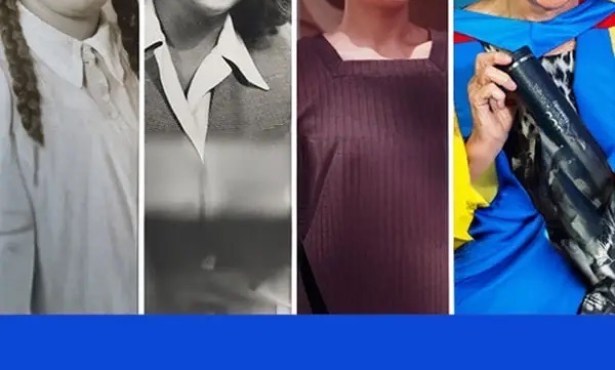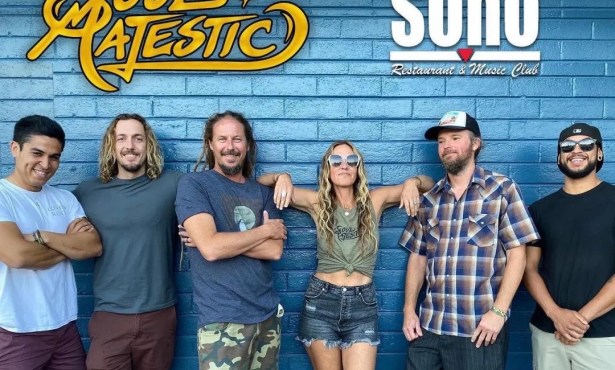Dislecksia: The Movie Coming Friday to Santa Barbara High School
Filmmaker Harvey Hubbell Answers Questions and Debunks Assumptions

Filmmaker Harvey Hubbell V is coming to town to present his movie, Dislecksia: The Movie, at Santa Barbara High School on Friday night at 7 p.m. In 83 minutes, Hubbell — a dyslexic himself — tells his own story while debunking the common misconception that the up to 35 million Americans affected with dyslexia just “see things backwards.”
A range of actors, business makers, lawyers, and even writers give testimonials about their “spelling problems” and subsequent creative successes. Celebrities like Billy Bob Thornton, Sarah Joy Brown, and Stephen J. Cannell make guest appearances. Even Santa Barbara’s well-known businessman and dyslexic Charles Schwab receives an honorable mention.
Hubbell also discusses the negative impact that dyslexia can have on people. For instance, 85 percent of juvenile offenders have reading problems, and more the half of the nationwide prison population is illiterate. Many students who struggle in school, Hubbell says, find their way in and out of the principal’s office and often end up in jail.
Since his movie premiered last October in New York City, Hubbell has traveled around the country to dozens of cities to educate communities about dyslexia — defined as a “learning difference,” not a “learning disability.” At the end of the informative but entertaining flick, Hubbell calls on everyone to educate themselves and get involved.
In Santa Barbara, advocate Cheri Rae — who has a dyslexic teenage son — has brought the issue to light in the Santa Barbara Unified School District and has been instrumental in creating a Parent Resource Center in the district office. Rae recently completed a mini-book titled DyslexiaLand to spread awareness about the one in five people — as the movie states — who are dyslexic.
In an interview with The Santa Barbara Independent, Hubbell noted the attention Santa Barbara’s district administrators have given to different learners, and he is looking forward to the discussion with the audience after Friday’s viewing. The rest of the interview with Hubbell follows:
How would you describe dyslexia? Dyslexia itself is invisible. One of five people around you are dyslexic. You are looking at varying levels and degrees. It affects the people who grew up in it in a very different way. You begin to see how it affects life, and it gives you a little more empathy.
What are you doing from here? We want to get our message out there; that’s really important for us. After that, we are working on getting out the educational environment. That’s another big thing we’re working on. We want people to contact us, keep them informed when we’re doing different screenings.
One person makes a choice to go to a film, they are part of an audience, and they realize they are not alone. We want to continue this discussion across the nation. Something beautiful is going to happen in the audience. We made a great film. It wasn’t just me — hundreds of people brought this film to light. The next part of the stance is how it’s taken into the community. My favorite city is wherever we’re playing and watching the community.
Do you have a favorite city that you’ve visited on your tour? They are all my favorite cities. Every audience is different and unique. I seem too cute, but really the audiences are what make these experiences beautiful and wonderful. What happens is moms and grandparents and dads and educators get involved in the community forums and some people have important information and some people just have to have a statement where they can say certain things. I can’t say one great city which I enjoy. Everyone just outdoes the next one by bringing in a well-rounded audience.
Where will the most difference be made, at the local level or national level? It comes down to one person making a difference. At the local level or the national level. Just working to make a difference on one of the most important issues of our time — teaching kids how to read. If you can’t read, you’re not going to do well with any of your classes. Somebody tell me what’s more important than educating our youth — our nation’s greatest resource. This is the civil rights movement of our time.
Eighty-seven percent of [youth] in juvenile detention facilities read below a 6th grade level. We’ve incarcerated more people per capita than any other nation. All we’re trying to do is teach kids to read. This isn’t a political issue. Who says they are not in favor of kids reading? It comes down to the 2nd grade teachers and the counselor who sees that a student is struggling with reading and who can do early intervention. It is easier to do it than when kids have self-esteem problems and they are 16 and ready to drop out of high school.
You host a discussion after the movie? It’s a hybrid of what some people think is a panel discussion or a Q&A. People come with problems and solutions. We’re a community builder. We strengthen the community that is already there. We give them something to focus on with the information that is so easy to be able to digest. They can take this to the board of education or the school system who wants to do the right thing.
A lot of times when people go to the theater, they watch the credits roll, and then they leave. But it becomes a town-hall meeting. “I’m mad as hell. What am I going to do about it?” Here’s what this mom did, or here’s a successful dyslexic over here. It becomes much more of an action-oriented community forum.
You define dyslexia as a learning difference, not a disability. Tell me about that. We call it a learning difference, not a disability. I’m dyslexic but I’m not allowed to park in handicap. I became disabled. I learned to read outside of the school system. More importantly, as we talk about the differences in the brain, one group of brains is not better than another group of brains. We need all groups in our society. The parent and child in the school system, we do know that when the student, educator, and the family [are] all working together with the community, it is best.
You interview a wide range of dyslexics in your film. Tell me about that. Dyslexia doesn’t discriminate. It doesn’t care about your gender or race. It’s beautiful in that regard. All these people who have struggled can develop an empathy. There are no two dyslexics the same. Here’s the best thing about this: Everybody has these gifts inside them; a lot of times people will be looking about what’s bad with these people. But what’s good with these people? Often they are visual thinkers: architects and entrepreneurs. They work great in teams; 62 percent of them do well with team work; 87 percent have the big-picture approach. These are the people who we want in our society. These are the out-of-the-box thinkers. The majority of entrepreneurs are dyslexic.
There are other wounded families in the world. But together we can all make a positive difference. Watching this movie isn’t going to teach a kid how to read. It’s going to help 2nd grade teachers and help boards of education. The education system was set up for the industrial revolution. We need a different kind of thinker. Problem solvers. People who can make our water clean again.



